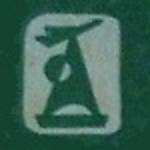Hi. I'm a bit new to modelling aircraft so please bear with me if I make some newbie mistakes.
I'm a university student studying Electrical and Mechanical Engineering in the UK. My group project this year is to design and build a high altitude wind generator system as a proof of concept for the idea. (For those who aren't familiar with the area, the general idea is that wind speed is stronger and more consistent high in the atmosphere, but it isn't practical to build wind turbines several 1000m tall. Hence, a different approach is necessary to capture the energy).
Our design concept for the project is as follows:
Build a model aircraft with a tether to ground. (The tether will stop it going too high and transfer power to/from the craft. This means that no battery is necessary on the craft).
The craft will be tested in a wind tunnel. The motors will be necessary for take-off but when the craft is in steady flight it is expected that with a high enough wind speed the craft will glide stationary (similar to a kite) when the motors are switched off.
The supply to the motors will then be switched off and the motors will be allowed to run freely. It is expected that they will then operate as generators (though will probably be quite inefficient).
The power generated will be transported down the tether to supply a small load at ground level. Probably just a light bulb or LED array for visual proof that it is operating.
Thatís the basics of the design so far. Itís very similar to this project: http://www.makanipower.com/what-is-airborne-wind/ however, our model intends to remain stationary in the air (the wind tunnel for testing isnít really going to be big enough to fly in a loop) and our model will be on a much smaller scale. Maybe about 0.5m wing span.
With regards to enabling the craft to remain stationary in a constant wind speed, we intend to have some form of control on the wings so that we can vary wing pitch, and therefore the lift force generated, appropriately.
I thought it could be useful to hear the thoughts and opinions of some people with significant experience in modelling aircraft on the matter. Does anyone have any advice/foresee any significant stumbling blocks for us? Are there any useful resources for calculating how much power will be required from the motor during take-off? (and if the vertical take-off position is assumed as in the Makani Power project, how would that affect the calculations?) What kind of materials would be advised for the body of the craft, bearing in mind that weíll almost certainly require some small servo motors attached to the wing to vary the pitch?
Thanks in advance for any help,
Michael
General Aircraft
This forum is for general aircraft modelling discussions.
This forum is for general aircraft modelling discussions.
Hosted by Jim Starkweather
High Altitude Wind Generation Model Aircraft
3msinclair

Joined: October 30, 2013
KitMaker: 2 posts
AeroScale: 2 posts
Posted: Tuesday, October 29, 2013 - 10:59 PM UTC

Jessie_C


Joined: September 03, 2009
KitMaker: 6,965 posts
AeroScale: 6,247 posts

Posted: Wednesday, October 30, 2013 - 04:28 AM UTC
Most of the modelling we do on this site is static display models. I would recommend that you look for flying radio control model sites for advice on the matters you're concerned with.
Posted: Wednesday, October 30, 2013 - 06:11 AM UTC
A kite with a wind turbine on it, and a power cable for kite string...
chuffing good idea!
Even very large kites have been launched throughout history with only a good head wind and a tug on the line - motoring your generator might not prove to be necessary at all. Anyway your assumption that an efficient motor must be an inefficient generator isnt correct, there are plenty of pump/turbines in the world.
one thing I wonder about- as youngsters experimenting with big kites and long strings, we found altitude gain from longer and longer strings was very disappointing, we got kites to fly a long way away, rather than very very high up, due to the accumulating weight of many yards of nylon twist. I suspect since your line is to be electrical conductor and hence quite hefty, you will encounter a similar problem.
good luck, Ill be watching for you in the wind power press.
I agree with Jessie that you should seek out RC airplane sites if you want to find engineers in the fields you need. they have all the telemetry gadgetry as well as the aeronautics.
chuffing good idea!

Even very large kites have been launched throughout history with only a good head wind and a tug on the line - motoring your generator might not prove to be necessary at all. Anyway your assumption that an efficient motor must be an inefficient generator isnt correct, there are plenty of pump/turbines in the world.
one thing I wonder about- as youngsters experimenting with big kites and long strings, we found altitude gain from longer and longer strings was very disappointing, we got kites to fly a long way away, rather than very very high up, due to the accumulating weight of many yards of nylon twist. I suspect since your line is to be electrical conductor and hence quite hefty, you will encounter a similar problem.
good luck, Ill be watching for you in the wind power press.
I agree with Jessie that you should seek out RC airplane sites if you want to find engineers in the fields you need. they have all the telemetry gadgetry as well as the aeronautics.
3msinclair

Joined: October 30, 2013
KitMaker: 2 posts
AeroScale: 2 posts
Posted: Wednesday, October 30, 2013 - 07:19 AM UTC
Thanks for the advice. The weight of the conductors would definitely be a big concern for a full scale model, but we're hoping that it shouldn't be too big a concern for our small model.

Jessie_C


Joined: September 03, 2009
KitMaker: 6,965 posts
AeroScale: 6,247 posts

Posted: Wednesday, October 30, 2013 - 07:52 AM UTC
Thinking of large kite-like structures, perhaps you may want to look into the things this man got up to a while ago.
 |











